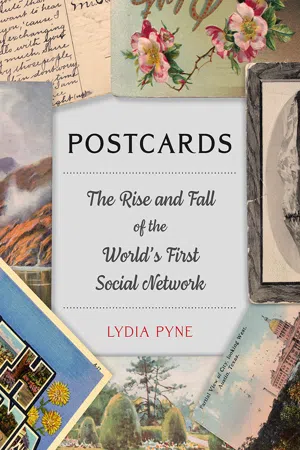
- English
- ePUB (mobile friendly)
- Available on iOS & Android
About this book
A global exploration of postcards as artifacts at the intersection of history, science, technology, art, and culture. Postcards are usually associated with banal holiday pleasantries, but they are made possible by sophisticated industries and institutions, from printers to postal services. When they were invented, postcards established what is now taken for granted in modern times: the ability to send and receive messages around the world easily and inexpensively. Fundamentally they are about creating personal connections—links between people, places, and beliefs. Lydia Pyne examines postcards on a global scale, to understand them as artifacts that are at the intersection of history, science, technology, art, and culture. In doing so, she shows how postcards were the first global social network and also, here in the twenty-first century, how postcards are not yet extinct.
Frequently asked questions
- Essential is ideal for learners and professionals who enjoy exploring a wide range of subjects. Access the Essential Library with 800,000+ trusted titles and best-sellers across business, personal growth, and the humanities. Includes unlimited reading time and Standard Read Aloud voice.
- Complete: Perfect for advanced learners and researchers needing full, unrestricted access. Unlock 1.4M+ books across hundreds of subjects, including academic and specialized titles. The Complete Plan also includes advanced features like Premium Read Aloud and Research Assistant.
Please note we cannot support devices running on iOS 13 and Android 7 or earlier. Learn more about using the app.
Information
REFERENCES
Table of contents
- Front Cover
- Half Title
- Title Page
- Copyright
- CONTENTS
- INTRODUCTION: INVENTION AND REINVENTION
- ONE: SIGNED, STAMPED, AND DELIVERED
- TWO: THE MEANS OF MASS PRODUCTION
- THREE: PUBLICITY AND PROPAGANDA
- FOUR: HAVING A WONDERFUL TIME, WISH YOU WERE HERE
- FIVE: POSTCARDS FROM COUNTRIES THAT NO LONGER EXIST
- CONCLUSION: THE AFTERLIVES OF POSTCARDS
- REFERENCES
- BIBLIOGRAPHY
- ACKNOWLEDGMENTS
- PHOTO ACKNOWLEDGMENTS
- INDEX